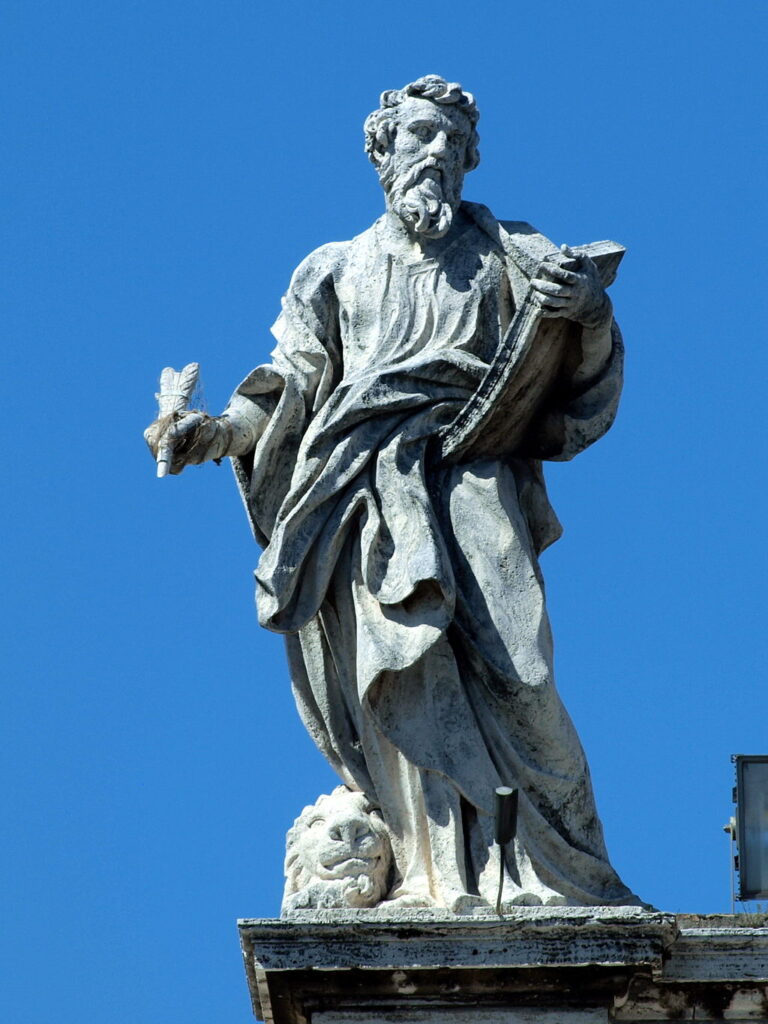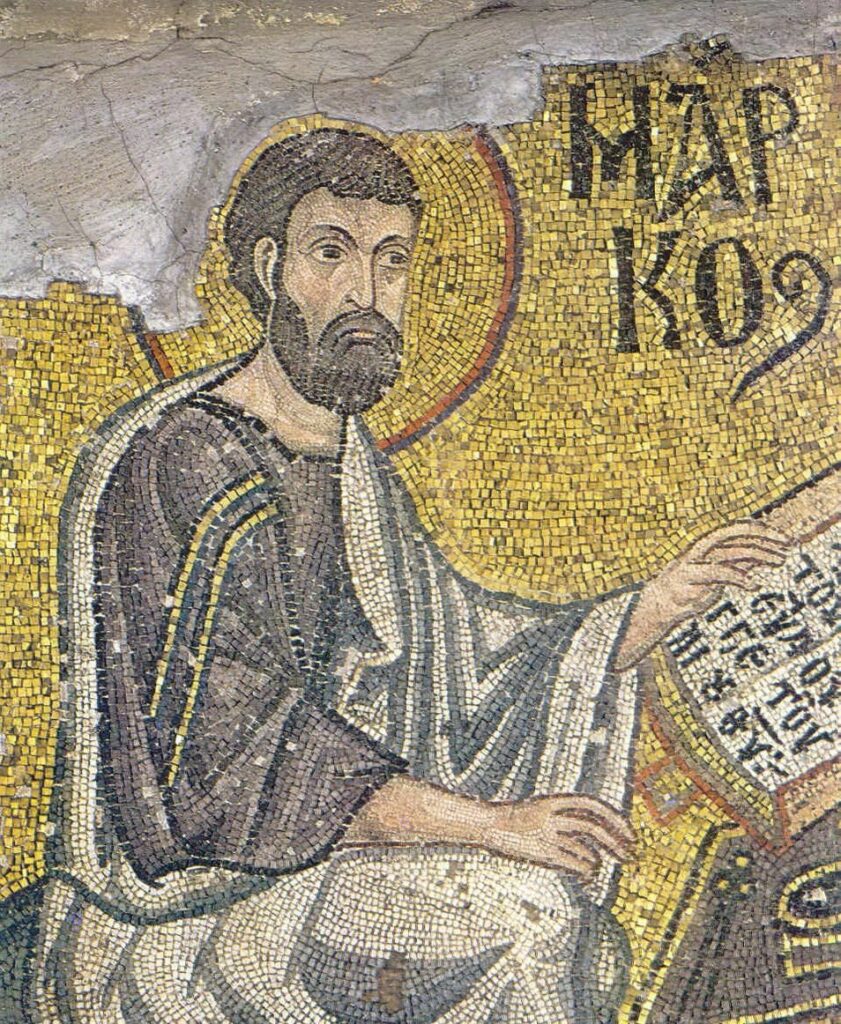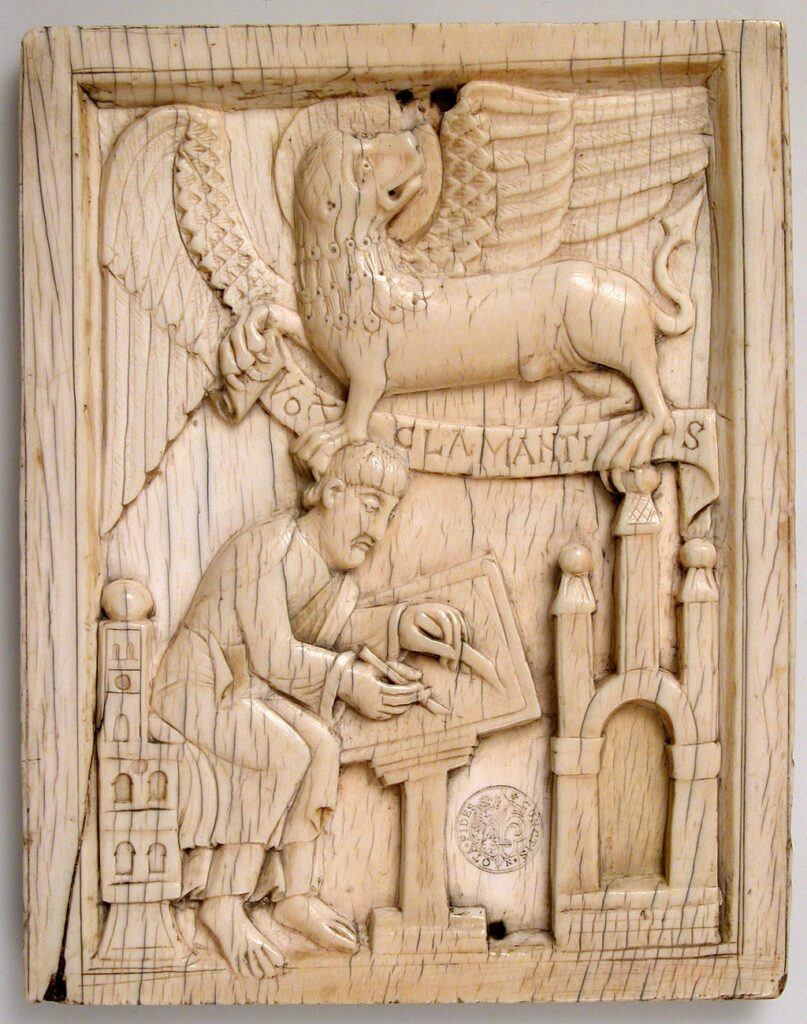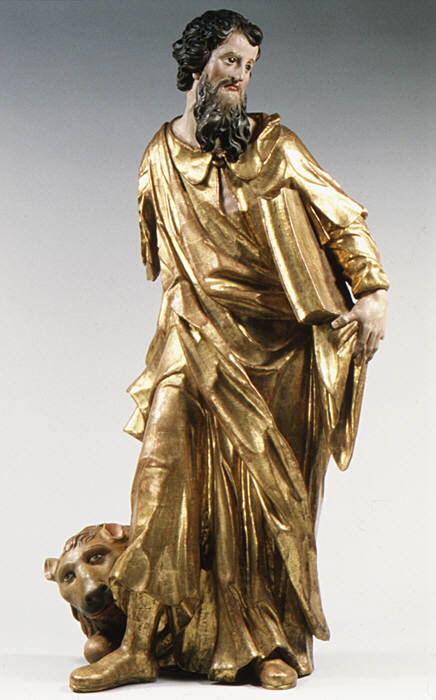
All images used are from Wikimedia Commons
We call the Gospel of Mark the Gospel of Mark for a simple reason: the most ancient copies of that document are titled “According to Mark”. But what do we really know about the human author whom we call Saint Mark the Evangelist?



Like all the Gospel writers, Saint Mark is commonly portrayed in art (see images above) as either reading or writing the book that he wrote—though he wrote it with the help of the Holy Spirit, of course. While modern scholars may debate the authorship of some books of the New Testament, Mark is widely acknowledged as the human author of the book that bears his name.
While that Gospel teaches us many things about Jesus Christ, it does not tell us anything directly about its author or how he came to know so much about our Savior. Unlike Matthew and John, Mark does not appear in the list of the names of the Twelve apostles. Since the author of the Gospel of Luke is believed to be the same Luke who traveled with the Apostle Saint Paul, it is commonly suggested that Mark is the same John Mark who later traveled with Saints Paul and Barnabas (Acts 12:25), although that collaboration did not end well (see Acts 15:36-41). However, the mother of that same John Mark was named Mary, and she was apparently a supporter of the early Church. After all, when Saint Peter was miraculously released from prison by an angel, he came to her house to speak with the Christian community that was hiding there (Acts 12:12-17).
That Biblical connection between John Mark’s family and Peter is the reason that scholars have proposed an interesting theory about the source for the contents of the Gospel of Mark. According to this theory, Mark became a traveling companion and assistant to Peter. After Jesus’ Resurrection, Peter journeyed from place to place, telling of his personal experience of following Jesus Christ during our Lord’s three-year-long public ministry and bringing people to conversion. As his secretary, Mark wrote down Peter’s stories, which he had probably heard many, many times. Thus the Gospel of Saint Mark is, according to this theory, almost the Gospel of Saint Peter: that is, a compilation of the preaching of Saint Peter as arranged by Mark. This theory can be seen in a recent translation of the Gospel of Mark by Michael Pakaluk. Titled The Memoirs of Saint Peter, Pakaluk’s translation, with its urgent, blunt tone, makes it seem very plausible that the Gospel of Mark was indeed based on the words of a simple fisherman-turned-street preacher.
The Prophet Ezekiel, who lived in the sixth century BC, received many visions. In one of his most famous visions, he saw four fantastical creatures, living beings who had the form of men but who had wings and four faces. On each creature, one of its faces looked like a man, one looked like a lion, one looked like an ox, and one looked like an eagle. (See also the four living creatures described in Rev. 4:7-8.) For various reasons, each of the four Gospels have been associated with one of those four face shapes for many centuries.



The Gospel of Mark is associated with the symbol of a lion. You can see that lion in all of the images above, although the lion is hiding at Mark’s feet in the example on the right. Perhaps the symbol of a lion seemed appropriate because Mark’s telling of the life of Christ is so vivid and almost abrupt. Mark uses the word “immediately” more than thirty times in his short Gospel.
There are some writings that claim to describe the life and actions of Mark himself, although some are more reliable than others. According to an ancient tradition, Mark brought the Good News to Alexandria, Egypt, established a church there, and became the archbishop of the city. During a time of persecution, he was arrested, tortured, and imprisoned. Tradition says that he died a martyr while being dragged through the city of Alexandria.

Several centuries later, also according to tradition, Mark’s relics were translated to the great city of Venice, where he has been called upon as a patron for the city—and against the city’s many floods—ever since.
In this lifetime, we will never know most of the personal details we would like to know about Saint Mark. Only God knows how and when Mark became a Christian, whether his Gospel is based on Peter’s testimony or not, and whether he ever personally met Jesus Christ. But many people have wondered whether Mark did include a cameo appearance of himself in one scene described in chapter 14 (verses 50-52).
After Jesus’ arrest in the Garden of Gethsemane, the Gospel records that all the disciples ran away—all except for one young man who followed as the Lord was taken away. That young man was wearing only a linen cloth, and when the guards tried to arrest him too, they only managed to grab the linen cloth. The young man escaped but was left naked. This detail has reminded Christians ever since of a different man—named Adam—who was naked in a garden and who listened to a snake rather than God.
Perhaps young Mark was ashamed that he did not try harder to save his Lord from death. Perhaps he thought his written record of the life of Christ would help others to believe. Whatever motivation Mark had for writing his Gospel, we can simply thank God, on Mark’s feast day of April 25, that he did.
Saint Mark, brave missionary and evangelist, pray for us!


